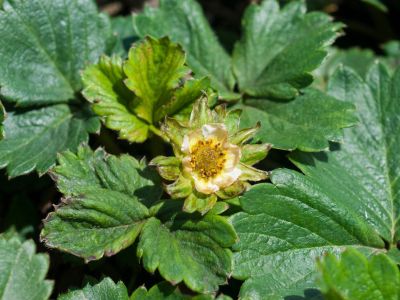Cyclamen mites are most prevalent in warm, humid environments and cause a lot of harm in greenhouses.
What Do Cyclamen Mites Look Like?
Part of the challenge of cyclamen mite control is the fact that these pests are too small to see without magnification. About a hundredth of a centimeter, the mites are yellowish brown, semi-transparent, and elliptical shaped. They have eight legs. The body is smooth and shiny, and the mite has large mouthparts.
Cyclamen Mite Damage
Without magnification you can identify cyclamen mites in your plants by the damage they cause. Like other mites, they pierce the plants with their mouthparts and suck cells dry. Cyclamen mites may infest any part of the plant but are often found around buds. Leaf damage can help you determine if cyclamen mites are to blame for harm to plants. Leaves will be smaller than normal, distorted, and may have irregular folding. The leaves and petioles can also become thicker than usual. Cyclamen mites may also attack and feed on fruits of flowering plants. On strawberries you may see withered flowers and poor berry production. Plants, like peppers, will show russeting and dry, brown net-like patches when the mites feed on the growing or mature fruits.
How to Control Cyclamen Mites
The best way to deal with cyclamen mites is to prevent them. They are often transported on the corms of cyclamen plants. Look for these and other greenhouse grown plants certified to be pest-free. Treating cyclamen mites with chemicals is difficult as they have become resistant to many pesticides. Also, the tiny mites and eggs remain protected from sprays in the small folds of leaves and buds. A better solution, if you see the telltale signs of damage, is to dispose of affected plants. If a plant has minimal damage, you can try to remove the affected parts and immerse the entire plant and its pot in 110 degree F. (43 C.) water for 15 to 30 minutes. There are also a couple of predatory mites on the market that target cyclamen mites.
